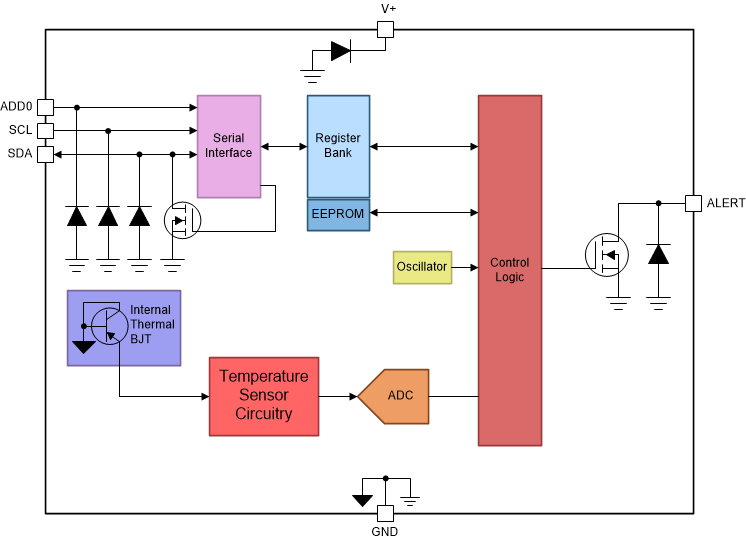TIDUEX1A December 2020 – March 2021
2.3.1 TMP117 – High-accuracy, low-power, digital temperature sensor
The TMP117 is a low-power, high-precision temperature sensor that provides a 16-bit temperature result, with a resolution of 7.8125 m°C and an accuracy of up to ±0.1 °C with no calibration. The TMP117 operates from 1.8 V to 5.5 V, consuming 3.5 µA typically, and comes in a 1.53 mm × 1.00 mm DSBGA package. This small package allows for easy integration into small hearable devices as well as fast thermal response times. The device also features integrated EEPROM, and a temperature offset register which can be used for single-point calibration.
 Figure 2-3 TMP117 Internal Block Diagram
Figure 2-3 TMP117 Internal Block Diagram